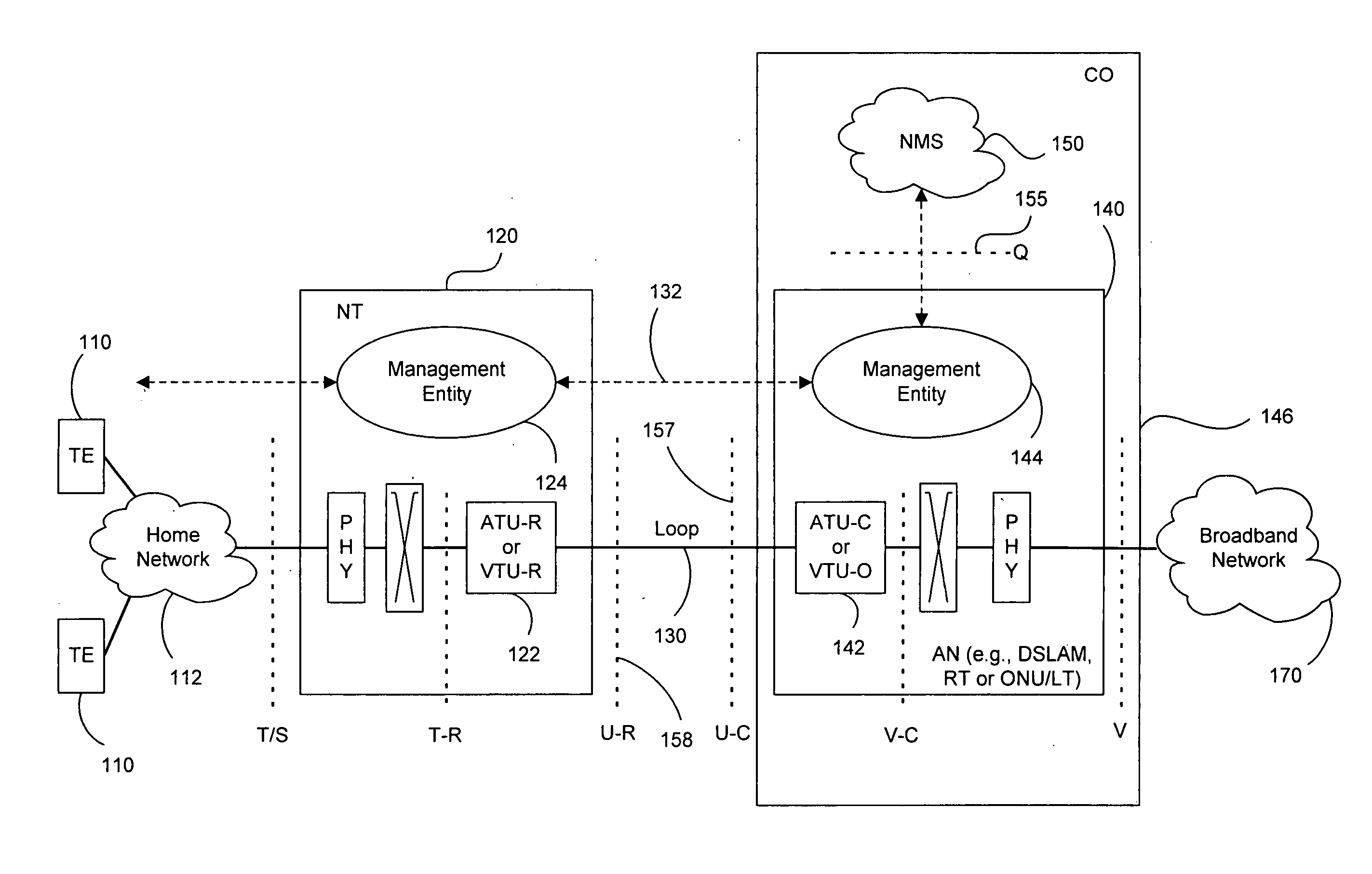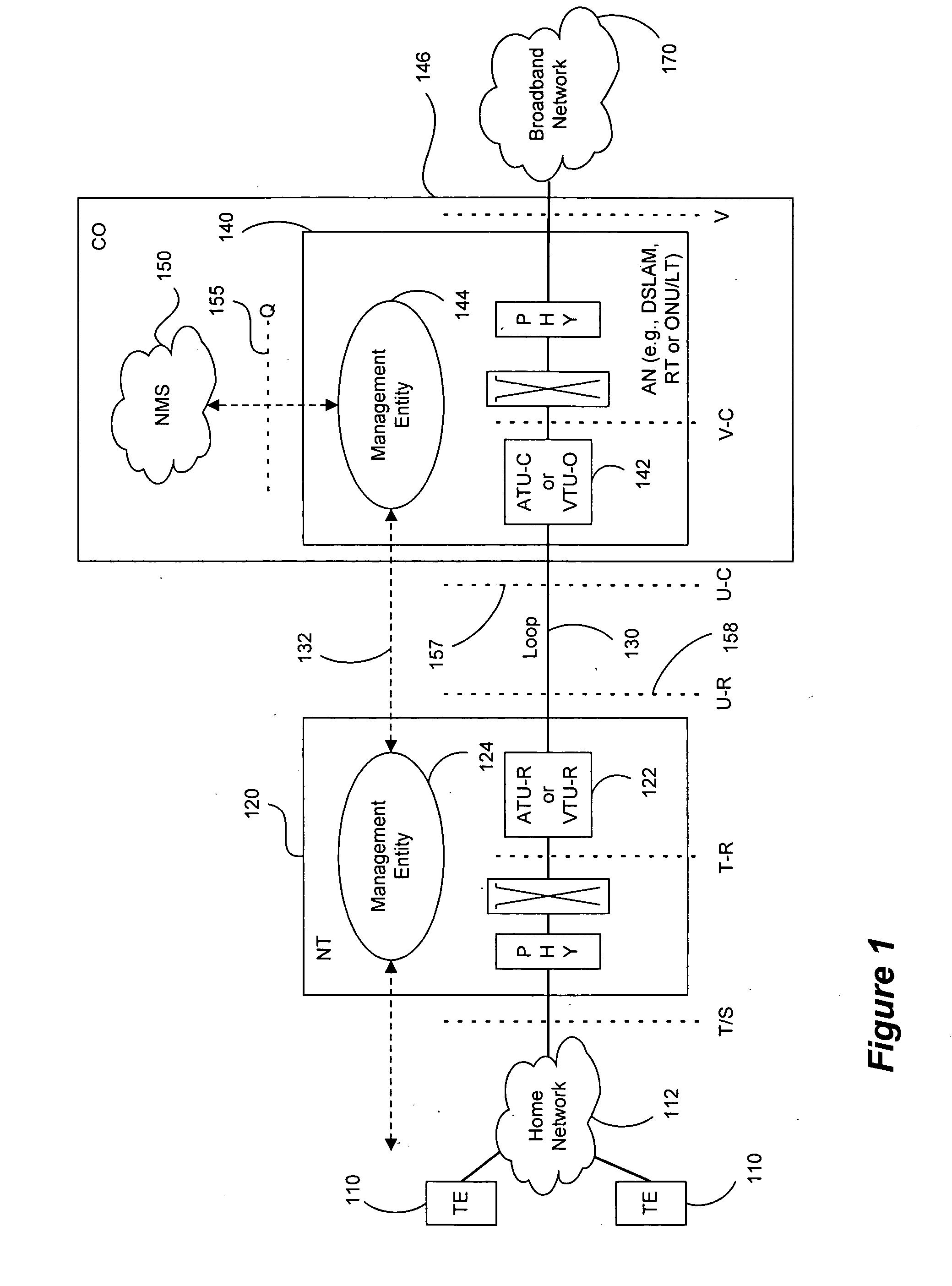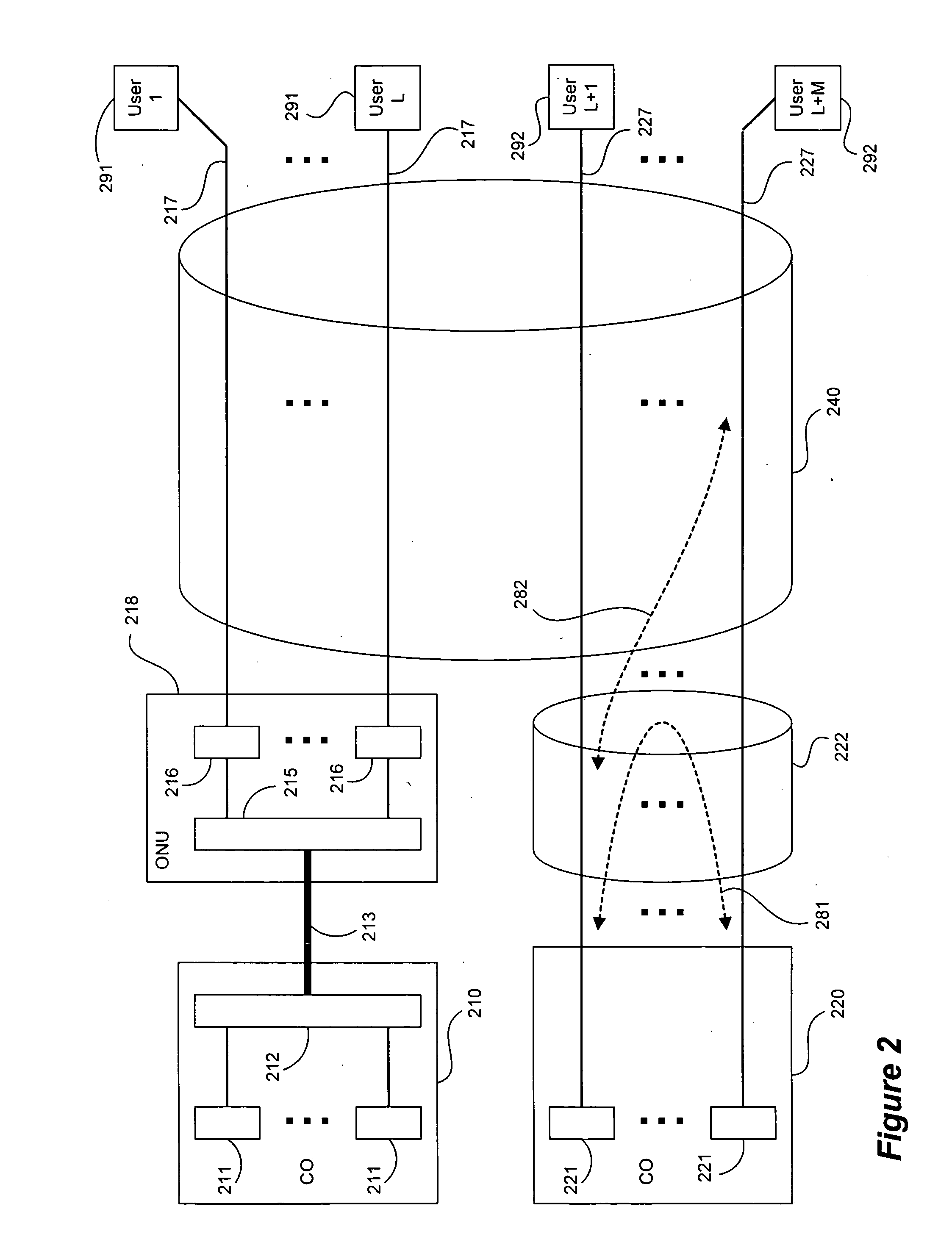Binder identification
a technology of binding and identification, applied in the field of binding identification, can solve the problems of high crosstalk noise and limited performance of dsl systems
- Summary
- Abstract
- Description
- Claims
- Application Information
AI Technical Summary
Benefits of technology
Problems solved by technology
Method used
Image
Examples
example 1
[0059] Given that 3-4 sources (“offenders”) usually dominate crosstalk noise of a “victim” pair, it is not beneficial to continue crosstalk identification for those pairs for which 3-4 “offenders” have already been identified.
example 2
[0060] If the crosstalk channel from “offender” A to “victim” B has been identified, then the crosstalk channel from “offender” B to “victim” A is likely to be very similar.
[0061] Binder identification requires a victim line to perform noise measurements, which can then be used to estimate crosstalk from other lines. The accuracy of such measurements can be enhanced by setting the programmable-gain-amplifiers (PGA) of the receiver to the highest settings possible. This ensures that the external crosstalk noise is strong relative to internal receiver noise sources. Given that the PGA gains are usually chosen using algorithms that are implemented inside the modem, an indirect method to affect the PGA gains can include controlling the transmitted signal power. Thus, it is beneficial for the transmitted signal power at the victim line transmitter to be set low during noise measurements, so that the crosstalk can be identified with higher accuracy (that is, so that crosstalk is larger r...
PUM
 Login to View More
Login to View More Abstract
Description
Claims
Application Information
 Login to View More
Login to View More - R&D
- Intellectual Property
- Life Sciences
- Materials
- Tech Scout
- Unparalleled Data Quality
- Higher Quality Content
- 60% Fewer Hallucinations
Browse by: Latest US Patents, China's latest patents, Technical Efficacy Thesaurus, Application Domain, Technology Topic, Popular Technical Reports.
© 2025 PatSnap. All rights reserved.Legal|Privacy policy|Modern Slavery Act Transparency Statement|Sitemap|About US| Contact US: help@patsnap.com



